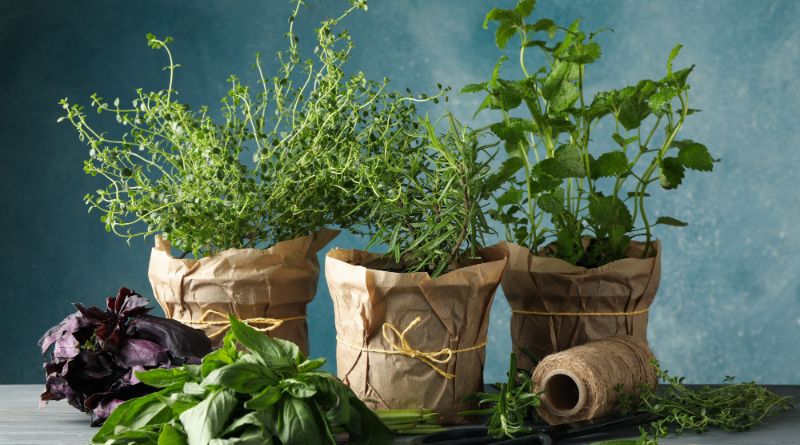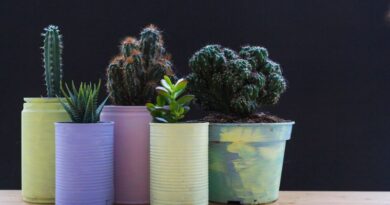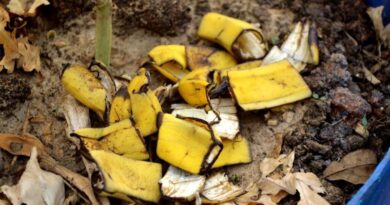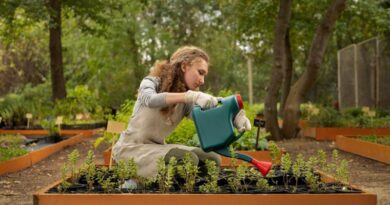If you’re looking for a convenient and space-saving way to garden, grow bags are the perfect solution. Embark on a gardening adventure with our comprehensive guide on “8 Useful Tips to Use Grow Bags for Gardening.” Discover the versatility and practicality of using grow bags to cultivate your favorite plants, flowers, and herbs. From selecting the right size to optimizing drainage and choosing the ideal growing medium, our tips cover every aspect of making the most of grow bags.
Explore the benefits of these portable and space-efficient containers that cater to various gardening needs, making them an excellent choice for both beginners and seasoned gardeners. Learn how to enhance plant health, promote better aeration, and maximize space utilization with these valuable insights.
Smart ways to use Grow Bags for Gardening
Embarking on a gardening journey can be immensely rewarding, especially when you harness the benefits of innovative techniques. In this guide, we delve into the world of grow bags, offering you eight valuable tips to optimize your gardening experience.
Quick Link: 7 Safest Countries for Solo Female Travelers 2024
1. Proper Drainage is Key
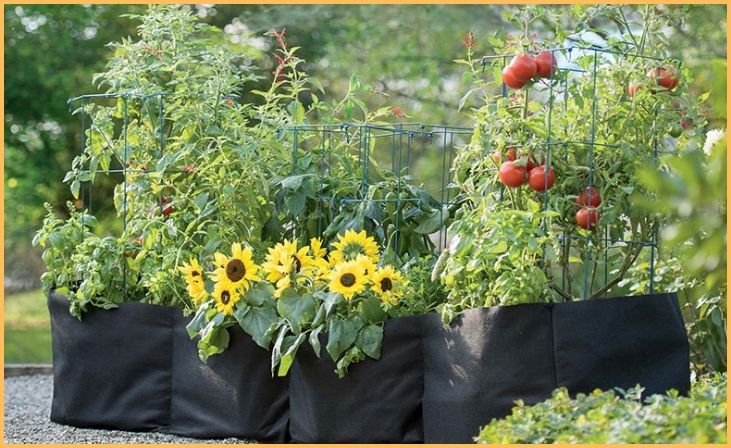
Successful gardening in grow bags hinges on the cornerstone of proper drainage. The key is to choose grow bags equipped with suitable drainage holes, a critical element in preventing waterlogging. These strategically placed holes facilitate the efficient drainage of excess water, ensuring a well-aerated environment for plant roots. This crucial aspect not only prevents root rot caused by water stagnation but also encourages the development of healthier and more vibrant roots. The balance achieved through effective drainage promotes optimal nutrient absorption, fostering a conducive space for plants to thrive.
By prioritizing proper drainage, gardeners can maintain an ideal moisture level, mitigating the risk of overwatering and creating a foundation for successful cultivation in grow bags. Ultimately, the health and vitality of plants in grow bags are directly tied to the thoughtful consideration of drainage, making it a pivotal factor in gardening success.
2. Select the Right Size
In the realm of grow bags, size plays a crucial role in the success of your plants. It’s essential to choose a size that aligns with the specific requirements of your plant, providing ample space for robust root expansion. Overcrowding, a common pitfall, can hinder root growth and impede overall plant development. By selecting an appropriately sized grow bag, you allow your plants to stretch their roots comfortably, promoting optimal nutrient absorption and water retention.
This thoughtful consideration ensures a conducive environment for healthy root development, ultimately contributing to the overall vitality of your plants. Avoid the temptation to underestimate the importance of size – it’s a key factor in creating an ideal growing space within grow bags, setting the stage for a flourishing garden. Choose wisely, and watch your plants thrive in the spacious and accommodating confines of their grow bags.
3. Quality Growing Medium
The success of a grow bag rests on the foundation of its growing medium. It’s crucial to opt for a well-balanced mix that harmoniously combines potting soil and nutrient-rich compost. This carefully crafted concoction not only provides the essential nutrients your plants need but also creates an environment conducive to optimal plant nutrition. The potting soil ensures aeration and proper drainage, while the compost enriches the mix with organic matter, promoting microbial activity.
The synergy between these components establishes a robust foundation for plant growth, enhancing their ability to absorb nutrients and thrive in the confined space of a grow bag. By prioritizing a nutrient-rich growing medium, you set the stage for a flourishing garden, where the health and vitality of your plants are nurtured from the very roots. Choose wisely, and watch your plants prosper in the nurturing embrace of a well-balanced and nutrient-rich growing mix.
4. Regular Watering Schedule

In the realm of grow bag gardening, maintaining consistent moisture stands as a pivotal factor for success. Establishing a regular watering routine is essential to prevent the soil from either drying out or becoming overly saturated. This delicate balance is crucial for the overall well-being of your plants, ensuring they receive adequate hydration without the risk of root rot or waterlogged conditions. Monitoring the moisture levels in the grow bags and adjusting the watering frequency accordingly creates an environment where plants can thrive.
Consistent moisture not only supports proper nutrient absorption but also fosters robust root development, contributing to the overall health and vitality of your garden. By prioritizing this balance, you lay the groundwork for a flourishing garden within the confined space of grow bags, where each plant can reach its full potential.
5. Position for Sun Exposure
For successful grow bag gardening, recognizing the significance of sunlight is paramount. Plants thrive on sunlight, and the strategic placement of your grow bags becomes a vital factor in their overall health. Choose areas with the appropriate sunlight levels tailored to the specific needs of your plants, ensuring they receive the right amount of sunlight for optimal photosynthesis. This thoughtful consideration contributes to robust growth, vibrant foliage, and the development of flowers or fruits.
Different plants may have varying sunlight requirements, so tailor your placement accordingly to create an environment where each plant can flourish. By prioritizing strategic sunlight exposure, you empower your plants to harness the energy they need, creating a flourishing and vibrant garden within the confines of grow bags. Choose your placement wisely, and watch your plants bask in the sunlight, thriving with vitality and energy.
6. Rotate and Rearrange
Preventing uneven growth in your grow bags is easily achieved through the periodic rotation or rearrangement of your plant containers. This simple yet effective practice serves to guarantee that all sides of your plants receive ample sunlight, fostering balanced development and a more symmetrical appearance. By regularly shifting the orientation of your grow bags, you encourage uniform exposure to sunlight, mitigating the risk of one side growing more vigorously than the others. This thoughtful approach not only contributes to the aesthetic appeal of your garden but also promotes healthier and more robust plant growth.
Embrace this simple maintenance routine to ensure each plant in your grow bags thrives equally, creating a harmonious and visually pleasing garden space. The minimal effort invested in this practice yields significant benefits, resulting in a garden where every side of each plant receives its fair share of sunlight and contributes to a well-balanced and flourishing environment.
Read More: 11 Best & Easy Healthy Lunch Ideas for Vegetarians
7. Support Tall Plants

For tall or heavy plants cultivated in grow bags, providing additional support is a prudent measure. Implement stakes or trellises to safeguard against bending or breakage, particularly as the plants mature. This extra support ensures the structural integrity of the plants, preventing potential damage and promoting a more stable and healthy growth. As plants reach their full height or produce substantial fruits, the added reinforcement becomes crucial in maintaining their upright posture. This thoughtful care not only safeguards against structural issues but also contributes to the overall stability and vitality of your plants.
By proactively addressing the support needs of tall or heavy plants, you create a garden environment where each plant can reach its full potential without the risk of physical stress or damage. Embrace this practice to cultivate a garden that thrives in both form and function, showcasing the strength and resilience of your well-supported plants.
Bottom Line
In conclusion, grow bags are a fantastic option for gardening in small spaces or for those who want a portable gardening solution. By following these 8 useful tips, you can maximize the potential of your grow bags and create a thriving garden.
Choosing the right soil and filling the grow bags completely are essential for healthy plant growth. Additionally, using grow bags with side flaps allows for easy monitoring of plant health and harvesting of root vegetables. Placing the grow bags in a location with adequate sunlight is crucial for the success of your plants.
Other tips include watering your plants regularly, providing proper support for tall plants, and using organic fertilizers to promote healthy growth. It’s also important to protect your plants from pests and diseases by practicing good garden hygiene and using natural pest control methods.
With the versatility and convenience of grow bags, you can enjoy gardening even in limited spaces. Whether you’re growing herbs, vegetables, or flowers, these tips will help you create a beautiful and productive garden. So, grab your grow bags, choose your favorite plants, and get ready to enjoy the joys of gardening in a compact and portable way.
FAQs
Absolutely! Grow bags are designed for reuse. Ensure proper cleaning between uses and consider replacing the growing medium to keep your plants healthy.
Select grow bag sizes based on the root system and space requirements of your plants. Larger plants like tomatoes may need more substantial bags, while herbs thrive in smaller ones.
For tall or vining plants, consider adding stakes or cages to provide support. This is especially important as the plants grow and produce fruit.
The frequency of watering depends on various factors, including the plant type, weather, and growing medium. Regularly check the moisture level, and water when the top inch of the soil feels dry to the touch. Adjust watering based on specific plant needs

